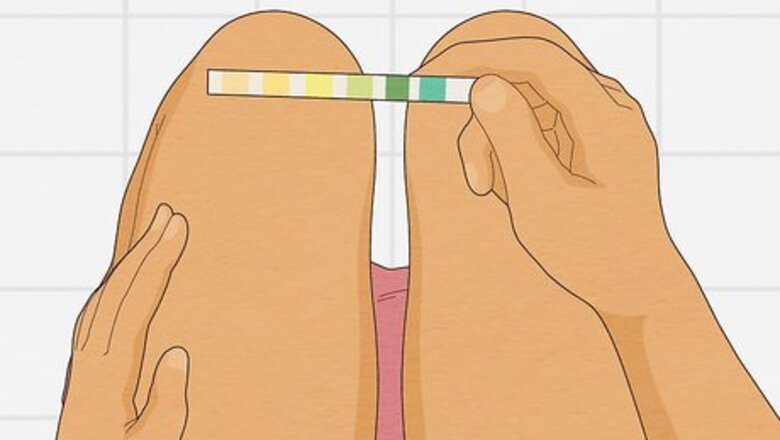
views
- Use an at-home vaginal pH test to narrow down the cause of your symptoms. If your test result is below 4.5, you might have a yeast infection.
- Common symptoms of yeast infections include red spots, itchiness, and cottage cheese-like vaginal discharge.
- Douching, antibiotics, pregnancy, and certain medical conditions (like diabetes) can put you at higher risk for a yeast infection.
- Meet with a doctor to confirm that you have a yeast infection, especially if it’s your first one. You can treat your infection with an antifungal medication like Monistat.
At-Home Vaginal pH Test
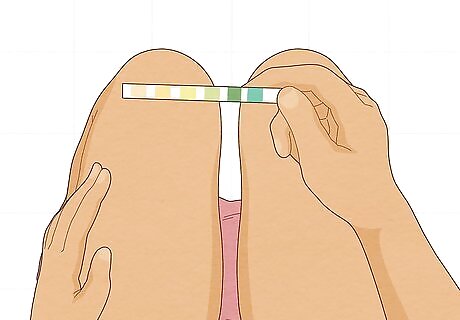
Insert a test strip from a vaginal pH test into your vagina. Take one of the provided strips in the kit and press it against your vaginal wall for a couple of seconds to test your pH. Then, remove the strip.
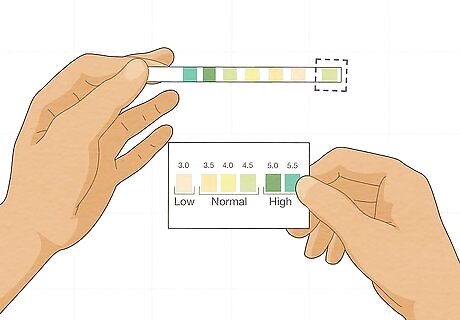
Use the color-coded test kit chart to see if your pH falls in the 4.0 to 4.5 range. Look at the end of the test strip—it’ll change color depending on your vaginal pH. Hold the strip up next to the color-coded chart and confirm what pH range you fall under. Your vaginal pH won’t likely be above 4.5 if you have a yeast infection. If it is above 4.5, you might have an infection like bacterial vaginosis, trichomoniasis, or group B strep. Some test kits provide a “symptom checker” sheet as well as a color-coded pH chart, which highlights the symptoms and average vaginal pH of common vaginal infections (like bacterial vaginosis, yeast infection, group B strep, trichomoniasis, etc.). Use this sheet to cross-check your pH results with your symptoms.

Confirm your diagnosis with your doctor before you start treatment. A vaginal pH test can help narrow down your diagnosis, but it isn’t concrete proof that you have a yeast infection. To be safe, visit your doctor for extra confirmation—they can perform more specific tests to give you an accurate diagnosis.
Common Signs and Symptoms
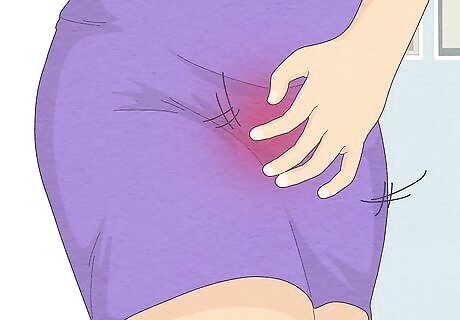
Itchiness: Itchiness is a common symptom for both vaginal yeast infections and skin yeast infections. With a vaginal yeast infection, you might notice a lot of itchiness around your groin, or even a burning sensation.
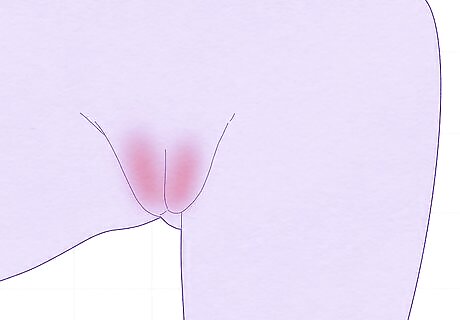
Inflammation and redness around the vulva and vagina: Take a look at the flaps of skin around the entrance to your vagina (also known as the vulva)—if they look red and swollen and/or feel itchy, you might have a vaginal yeast infection. Redness is a common symptom for yeast infections on other parts of the body, like the mouth, penis, or skin folds.
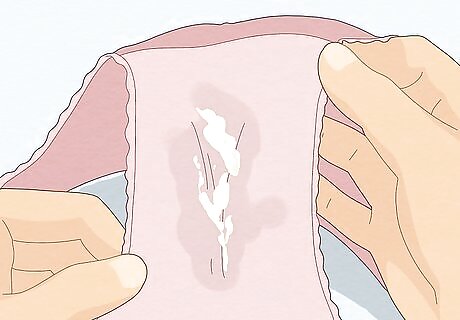
Cottage cheese-like discharge: Vaginal discharge on its own is perfectly normal as long it has a sticky or runny texture. If your discharge is and thick, clumpy, and resembles cottage cheese, it could be a sign of a yeast infection. For some people, this discharge doesn’t smell like anything; for others, it might give off a yeast- or bread-like scent.
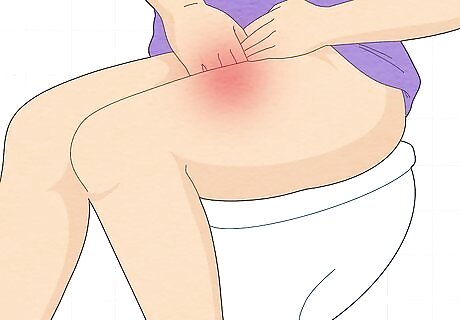
Painful urination and pain during sex: If you have a yeast infection, you might experience a burning sensation whenever you pee. You might also notice a burning feeling when you’re getting sexually intimate with your partner.

Redness and white patches near the throat: In cases of throat-based yeast infections (also known as “oral thrush”), you may notice redness in your throat and/or white blister-like bumps or patches forming on the back of your mouth near your throat and on the tongue. Difficulty swallowing and cracks at the corners of your mouth (also known as angular cheilitis) are other common symptoms of oral thrush.

Rashes, patches, and pimples on the skin: If you have a skin infection on your hands or feet, you may notice a rash, patches, and blisters between the toes or fingers. White spots white may also start to form on the affected nails. Pimples are another common symptom of skin-based yeast infections.
Risk Factors for Yeast Infections
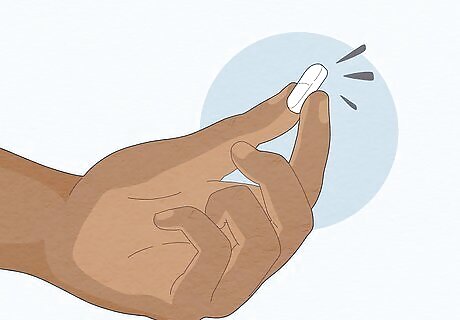
You recently took an antibiotic treatment. Antibiotics clear out all the bad bacteria in your body during an infection—but they also kill off all the good bacteria that helps keep your yeast levels balanced. Without this good bacteria, the yeast begins to multiply, which causes a yeast infection.
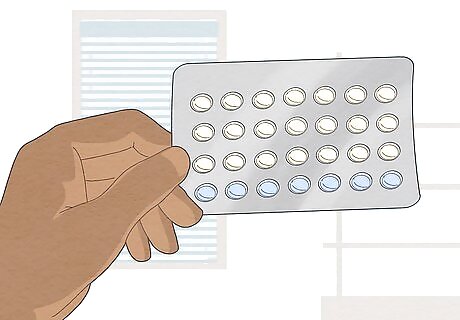
You’re pregnant and/or have changing hormone levels. When your normal hormone balance changes (like during a pregnancy), the balance of yeast in your body changes, too. Medications that impact your hormones can also lead to yeast infections (like birth control). Sometimes, the normal hormone changes that occur during your period can even lead to a yeast infection.
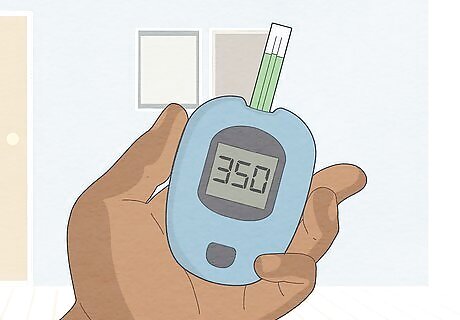
You have uncontrolled diabetes. Vaginal yeast infections are more common in those who have trouble managing their blood sugar. When your blood sugar is out of control, the yeast feeds on the sugar, which causes it to grow out of control.

Your immune system is weak. Immune-suppressing medications as well as long-term immune-suppressing treatments (like radiation or chemotherapy) can cause your body’s yeast populations to grow out of control. Treatments like corticosteroid therapy can put you at a higher risk for yeast infections since they weaken your immune system.
Medical Treatment

Treat a vaginal yeast infection at home with an OTC antifungal treatment. Pick up an OTC cream or suppository (like Monistat) and apply it directly to your vagina. Read the instructions on the medication and follow them carefully—you might have to use it for multiple days, even if your symptoms fade away after a few rounds of treatment. Single-dose treatments for vaginal yeast infections (like fluconazole) are available with a prescription. Talk to your doctor and see if that’s a good option for you.
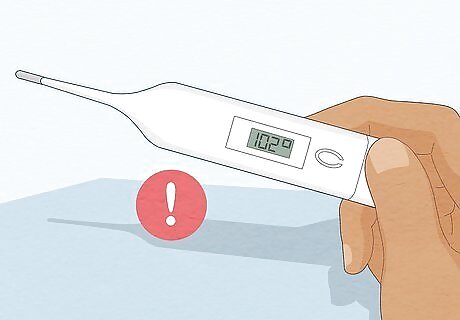
Seek medical attention if you develop a fever. If your yeast infection is accompanied by a fever, it could be a sign of a more complicated medical issue. Talk to your doctor—they may want to run some tests and prescribe certain medications to help you treat your yeast infection. If you have chills and aches, let your doctor know as well.
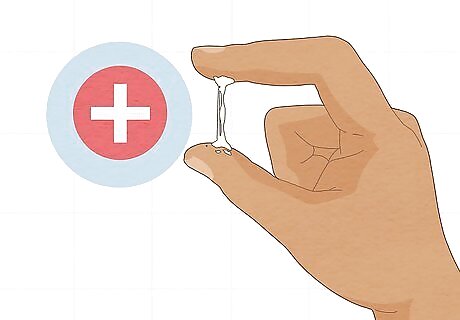
Talk to your doctor if you keep getting yeast infections. A yeast infection every now and then isn’t such a big deal as long as it clears up. If you keep getting yeast infections over and over, though, there could be a deeper medical issue at play. Tell your doctor that you’re having multiple yeast infections and see what they say—they may do some testing and provide some medicine to help get rid of them.

See a doctor if your yeast infection doesn’t go away in 3-7 days. Most yeast infections will clear up with treatment after a few days, so talk to your doctor if your yeast infection is really persistent. They may want to give you a check-up or prescribe medication that can help treat your yeast infection. Long-lasting yeast infections can get infected and could be a sign of a deeper issue. Talk to your doctor to be safe.

Talk to your doctor if you’re pregnant and you get a yeast infection. Yeast infections are common among pregnant people and are usually not dangerous, but some medications can be harmful to you or your baby. Before you try to treat your yeast infection, talk to your doctor about treatment options. Avoid applying any over-the-counter creams until you’ve talked to your doctor. In general, OTC medications like butoconazole (Femstat), miconazole (Monistat), terconazole (Terazol), and clotrimazole (Gyne-Lotrimin) are all safe to use while you’re pregnant. Keep in mind that your yeast infection may take more than a week to go away if you’re pregnant.

Get medical treatment if you have diabetes and you get a yeast infection. Yeast infections can potentially lead to complications if you have diabetes, so it’s important to talk with your doctor before you try to treat or diagnose your own yeast infection independently. They may recommend treatment options or prescribe certain medications. Recurring yeast infections could be a sign that your diabetes treatment plan needs adjustments.












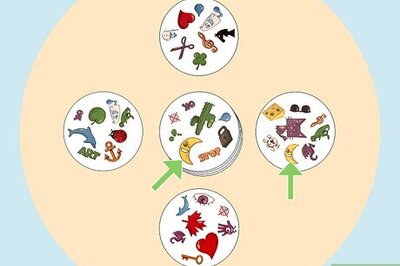







Comments
0 comment